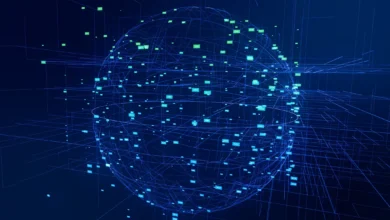
AI is revolutionising content creation across industries, including journalism, blogging, and screenwriting. We’ve seen the Hollywood writer strike; we’ve read Goldman Sachs’ recent research on the effects of AI on economic growth, including their baseline assumptions that 63% of US employment will be complemented by AI.
But “complemented” is very different from “replaced”: I’d say, “made better, more productive, more efficient”.
While there are concerns about its impact on traditional content creators, AI tools streamline the creation process, automating tasks and offering data-driven insights for personalised content that would not have been possible before.
However, while incorporating AI expands the possibilities of content creation, finding the right balance between AI and human creativity is crucial. Human qualities like creativity and emotion cannot be replicated by AI algorithms, and it is a mistake to think you can automate away a need for people.
The truth is the opposite: you are automating away the things people should not ideally be doing so they can do what only they can do.
For instance, doing in-depth research or field investigations is becoming a luxury that has become increasingly scarce in the current media landscape as the daily content demand increases. Simply relying on freelancers is becoming insufficient in addressing the issue of highly skilled professionals being overwhelmed with monotonous tasks.
AI can also not replace the unique intuition and understanding that journalists and writers possess, especially in specific local contexts or certain niches.
Maintaining Human Values and Ethical Use of AI-Generated Content
Existing AI systems primarily focus on extracting structured data and generating formulaic articles based on that information, such as creating multiple articles about election results. However, the future lies in enabling collaboration and interaction between humans and AI.
Certain aspects of the content creation process require the instantaneous decision-making abilities of the human brain, which currently surpasses the computational power available. Prioritisation and trend-based decision-making are just a few examples.
So why develop AI for these tasks? Because the human brain excels at them and more. The focus should be on exploring the possibilities of content creation beyond traditional formats, such as immersive journalism, without the need to master all the associated skills, as AI can assist based on your guidance.
There is no substitute for human judgement and a nuanced understanding of on-the-ground situations: there will not ever be an alternative, the meaning of the latter will just evolve. The power of AI lies in its continuous predictions and collaboration with humans, creating a workflow that maximises productivity and advancing the mark at which individuals can engage. When people claim humans will become unnecessary, they are reflecting a bubble mentality, the reality is that AI allows humans to focus on new endeavours.
Modern content demands require a solution that goes beyond traditional freelance platforms – which just enable behaviours that have never really evolved. By entrusting human-AI-powered companies with content production, the equation changes: through how we use and develop technology, to how we approach and develop the creation and use of human talent alone.
This approach unlocks the potential for more ambitious projects, freeing the human brain from formulaic work aimed at maintaining views and publishing numbers – for both our people and our clients, whose focus invariably shifts to grander visions and strategic goals.
Overcoming fears and leveraging AI potential
People fear what they don’t understand, but you don’t need to be a coder to understand or use AI. Programmers can build complex AI structures while specialists help direct them and users deploy them.
Programmers speak the language, specialists tell them what they need to communicate, and users put what they make into practice.
Prior to today, the evolution of content creation tools has been marginal, with little change in actual processes over the past 40 years. The demand for content, driven by the wider accessibility of smart devices and the arrival of the internet, has become effectively infinite. So, the barriers to content consumption disappeared and the mechanisms of supply stayed the same.
This is where AI comes in – it alleviates constraints on production. The dreamers can now realise their visions, amateurs can churn out more professional work, and pros can produce masterpieces. In time, of course, audience tastes will evolve to reflect this – but that is a GOOD thing.
Pushback and concerns about AI and content outsourcing will continue, but it has become impossible for dismissive attitudes to remain. Even the most stubborn will gain a better understanding of both and will eventually conclude that their concern is misplaced.
The real worry is deliberate simplification of the issue to instil fear and paralyse the sector, led by those who benefit from avoiding innovation, and risk being surpassed by those who embrace it.
Embracing AI doesn’t mean immediate full adoption, but starting with simple changes like changing their internal approach to tasks that could later be automated. Incremental steps and breaking decision-making into simpler micro-decisions are key. Just as factories and mills changed jobs but created far more, AI will transform how we apply ourselves (with far fewer workplace hazards).
It is crucial to ask questions and challenge assumptions – there is nothing wrong with voicing opposition. We stand at the dawn of brilliant possibilities. AI represents the future of technology, offering endless possibilities and advancements. Fear of AI is misplaced; it is time to be bold.
Open and honest expressions of fear and hope allow for debate that informs all of us. It’s what empowers society to embrace what will be the great unfettering of human creativity and the most significant leap forward in human history.


